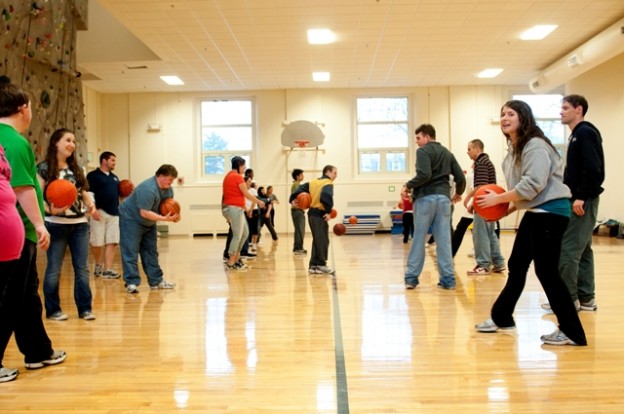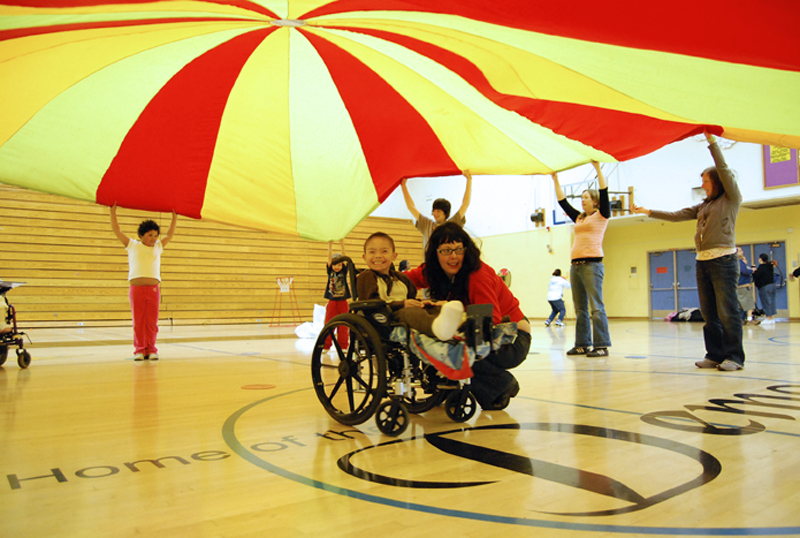
7 Ways to Include a Student with Special Needs in Physical Education
Does your child participate in physical education at school? What about sports?The ones that need it most receive it less
Studies have found that special education students are less likely to be enrolled in physical education compared to their general education peers. Separate studies have also found that special education students are more likely to develop childhood obesity and related health conditions compared to their general education peers.
Additionally, special education students often have delays in gross motor skills due to conditions such as hypotonia or dyspraxia. But physical therapy is usually only 1 to 2 hours per week, if it is offered at all. I know that my son has hypotonia, but he has never been eligible for physical therapy in school.
Then there’s the problem of delayed social skills - how does a student participate in a team activity when social nuances are confusing? These are the students who keep the bench warm during gym class.
In other words, the students who could benefit from physical education the most end up with minimal participation.
How to Include a Student with Special Needs in Physical Education
But it doesn't have to be that way. Physical education teachers around the world are coming up with new ways to include all students and get everyone moving. Here are seven everyday challenges and solutions in physical education today, all of which can be written into a student’s IEP. [caption id="attachment_14089" align="aligncenter" width="800"] Photo credit: Portland Public Schools, Oregon[/caption]
Photo credit: Portland Public Schools, Oregon[/caption]
1. Sensory Integration
The first two things I always notice about phys ed classes are the loud music and fluorescent lights in the gym. These are major barriers to students with some types of neurological differences. Many students are also sensitive to bright sunlight outdoors and the sound of squeaking sneakers on the gym floor, making it difficult for physical education teachers to find an appropriate location for class.
The music problem is easy to solve - lower the volume or turn it off. Soundproof headphones may also be used indoors, and sunglasses can be used outdoors. Schools may find other indoor lighting options that are more cost-effective, taking advantage of green energy incentives for LED light bulbs or simply shutting off some lights are relying more on natural lighting.
2. Behavior
Behavior is always a concern in physical education classes, where there’s plenty of movement and incidents can happen in rapid succession. Positive Behavior Interventions and Support (PBIS) are a systematic, proven method to prevent negative behaviors and increase healthy interactions. The method may be summarized as “Prevent, Teach, Reinforce.” Behavioral expectations are explained from the beginning with supports such as picture schedules. Then the class material is taught through positive interactions, and the lesson is reinforced by referring back to behavioral expectations and evaluating progress.
My son’s physical education teacher in fifth grade managed each class by writing out the schedule on a board in the gym. The students knew the order of the warm-up exercises and exactly how many minutes each segment of the class would take. My son thrived in this environment and even memorized all of the warm-up rotations to do at home.
3. Class Size
In some school districts, physical education classes are becoming larger and larger due to budget constraints. For example, in Detroit Public Schools, a single physical education class may have 180 students co-taught by 2 phys ed teachers. One of my son’s former coaches teaches in that environment, and she says that it takes more than 10 minutes of class time just to take attendance and make sure each student has a ball.
By working with the school’s social worker, it is possible to create a positive experience for a student with special needs in a super-sized class. Peer-to-peer support groups can work together in class to ensure full inclusion. For example, when my son was having trouble with his gym locker, another student offered to share his locker with him. When the class separates into teams, 4 or 5 other students make sure that my son understands the rules and his role on the team.
4. Team Building
Physical Education is the perfect opportunity for team building exercises. Instead of competitive games, the class can focus on creative games that only succeed when a whole team works together. “Ants on a log” is my first-grader’s favorite game.
In first and second grade, my son’s phys ed teacher excelled at team building. Before any game, he explained that the students had to stay with their team and help their team members reach the goal - leaving a team member behind was never an option.
5. Professional Development
Many teachers of physical education complain about a lack of professional development opportunities. Scheduling is a problem because of coaching duties before and after school, and most continuing education programs are geared toward teachers of academic subjects.
An increasing number of teacher certification programs offer classes in Adaptive Physical Education. The Adaptive Physical Education National Standards (APENS) organization promotes teacher certification in 15 standards for physical education, and its goal is to place a nationally certified Adapted Physical Educator (CAPE) within every school district in the USA. Understanding even just a few of these standards can go a long way toward inclusion in physical education.
Attending an IEP is another way for physical education teachers to become involved in the process of inclusion. With the social worker and other therapists in attendance, it is possible to develop goals that fit the physical education curriculum and are tailored to a student’s unique needs.
None of my son’s physical education teachers have ever attended his IEPs, but I make it a point to talk to them during teacher conferences and to approach them whenever I see them at school. I share information about my son’s progress in motor skills, and they share information about class structure that I can use at home. The team-based approach isn’t just for students!
6. Accessibility
In 2010, the US Department of Education made recommendations to increase accessibility in physical education classes. Hard surfaces such as concrete and asphalt may be dangerous for individuals with dyspraxia, and softer surfaces such as sand or wood chips make it difficult to maneuver a wheelchair.
Gym surfaces and outdoor mats are one way to make physical education more accessible. Another way is to level the playing field by having the whole class play a game such as sitting volleyball or scooter soccer.
7. Alternatives
In some cases, enrollment in a physical education class is not feasible. But it is still possible to incorporate physical activity and healthy lifestyle habits into a special education curriculum:
- take frequent “movement breaks” by going for a walk, learning to jump rope or spending 10 minutes on a playground
- develop a daily 15 minute workout routine
- get permission to use the school’s weightlifting room - sometimes curiosity about various machines is enough to jump-start an individualized exercise program
- follow through on the student’s interest in a specific sport, such as tennis or gymnastics, and develop a fitness routine around that
- follow through on a student’s interest in fitness games on Kinect or Wii
It has been demonstrated again and again that physical education enhances cognitive function and academic performance. Social skills and collaborative teamwork are also benefits of a balanced physical education program. So let’s make physical education inclusive and accessible to all students so that they can learn the life lessons that can’t be taught in a traditional classroom.
You may also be interested in: What You Need to Know About Students with Special Needs and Participation in Interscholastic Athletics



